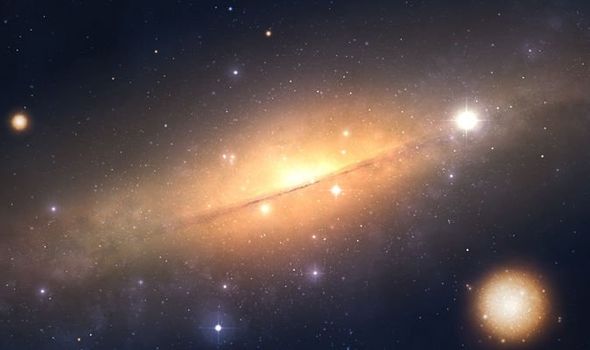
An international team of astronomers led by the University of Tokyo used ALMA to view 39 previously-undiscovered ancient galaxies, a find that could have major implications for astronomy and cosmology.

Launched from the Baikonur Cosmodrome in Kazakhstan on Saturday, Spektr-RG will detect X-ray emissions from across the sky, including those from huge clusters of galaxies. It could help astronomers better understand dark energy.

The European Very Large Telescope participated in test coordinated by the International Asteroid Warning Network, successfully targeting, tracking and imaging a double asteroid as it flew within 5.2 million km of Earth on 25 May.

Japanese astronomers have captured images of an astonishing 1800 supernovae. 58 of these supernovae are the scientifically-important Type 1a supernovae located 8 billion light years away and are known as ‘standard candles’ in astronomy.

Curtin University researchers are part of an international project that will use a huge underwater neutrino telescope at the bottom of the Mediterranean Sea to help explain some of the most powerful and mysterious events in the universe.

When complete, the Square Kilometer Array (SKA) will be the largest radio telescope array in the entire world. To sort through all its data, the “brain” for this massive array will consist of two supercomputers.

Hubble’s latest contribution comes in the form of a deep-sky mosaic image that was constructed using 16 years’ worth of observations. Known as the “Hubble Legacy Field“ it contains roughly 265,000 galaxies.

The planet-hunting TESS spacecraft has found its first Earth-size planet orbiting a star located about 53 light years away. The star, HD 21749a, also hosts at least one other world, a warm “sub-Neptune” planet.

The Event Horizon Telescope (EHT) has revealed the first-ever image of a black hole. The black hole in this image resides at the center of M87, a massive galaxy that’s in the Virgo cluster of galaxies.

It is the sixth storm scientists have been able to document since 1989 when NASA's Voyager 2 probe first flew past Neptune, but it is the first whose birth and development was documented.

Astronomers from Japan, Taiwan and U.S. have discovered 83 quasars powered by supermassive black holes in the distant universe, from a time when the universe was only 5 percent of its age.

Using ESA's Gaia spacecraft and NASA’s Hubble Space Telescope, astronomers have come up with the most accurate measurement yet of the Milky Way’s total mass. It contains about 1.5 trillion times the mass of Earth’s Sun.

Recent U.S. study suggests how surveys using gamma telescopes could find evidence of spacecraft powered by tiny artificial black holes. The concept of a black hole-powered spacecraft was first introduced by science fiction author Arthur C. Clarke.

A release of data gathered by the Low Frequency Array (LOFAR) telescope network in Europe has discovered more than 300,000 potential galaxies in a tiny corner of the northern sky.

It has taken researchers almost three years to produce this deepest image of the Universe ever taken from space, by recovering a large quantity of ‘lost’ light around the largest galaxies in the iconic Hubble Ultra-Deep Field.